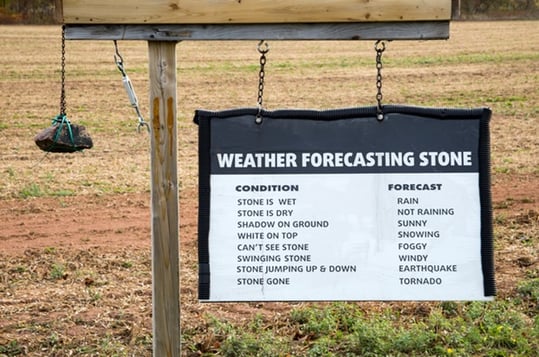
What do we do now? What is going to happen in the future? These “mid novel coronavirus” days we all have these questions, and some will use their very best insights to predict the future.
One crucial thing to take note of – while we haven’t been through this circumstance before, we have been through times of uncertainty, fear, and turmoil before. We have come through those times stronger and better for having had the experience. We’ll do it again this time.
As leaders it’s essential that we maintain our wits. (I include confidence, intellect, humor, and empathy in my definition of “wits.”) Leadership is a double-edged sword. In good times it’s exciting. In not so good times, it can be nerve wracking.
The Universal Truth in Business
One thing is certain – business must, can, and will go on.
There will be winners and losers in our new reality, but you can improve your odds of success by keeping that universal truth in mind.
In 2008 we were faced with the Great Recession. And, yes there was less business going on, but sales were still made, and clients were still served. Industry leaders actually grew. Success then required two things – a willingness to innovate and persistence. Those same two things are required today.
Innovation
As the economy does whatever its going to do – don’t stop innovating. This is key. Because, regardless of what the economy is doing, someone in your industry is still making sales.
Hopefully, you’ve kept up with innovation and have some foundations in place already to encourage and develop innovation in your business. (If you don’t, here are some tips to help you start.)
Innovation doesn’t mean scrapping everything and redesigning from the ground up. It’s the constant, ongoing evolution of improvement in your products, services, and business model. Put yourself in your customer’s shoes. Whether they are a Fortune 100 company or a start-up, you need to serve them in increasingly better ways.
- What will make their lives easier or better?
- What do they need?
- How can you help them?
- How can you reposition your brand to meet their new needs?
Remember, your clients have options. The availability of information through the internet means that they often have more information about their options than your salespeople might have.
Persistence
No matter what, don’t give up. Make the calls, send the emails, hold the Zoom meetings.
Everyone in your organization needs to continue to reach out, maintain contact, provide reassurance, and focus on building and nurturing relationships.
Start with the people you know. Check in with them. Show them that you care about them as people, not a paycheck.
Add the people you want to know into the mix. But first, do your homework. If you don’t know anything more about me than my name, why should I bother with talking to you? You have clearly demonstrated that you’re not interested in me, because you don’t care enough to learn about me before you send me an email. If that’s true, then how can you help me? In those cases, it’s more about how I can help you. That doesn’t cut it when things are uncertain.
Google and LinkedIn are great research tools. Check out their websites, too. Then make a genuine, real outreach. At the very least, put your outreach in terms of what speaking with you will do for them. As opposed to: “I’d like to connect with you to increase my network.” Really?!?
A side note here – the presumptive emails about setting up a meeting with me on “Tuesday at 1:30” are not the answer. If you’re asking your team to use this approach, please stop! Give them better tools to work with immediately.
Making Changes
Cash is a major concern. Inventory levels, cash flow, staffing, marketing budgets, leases, and so on should be reviewed now.
A recent study revealed that 24% of business owners plan to downsize if the outbreak worsens. Labor cuts are occurring, especially in the leisure, hospitality, and travel industries. Some businesses may wonder if they should reduce their marketing spending as well.
As Bruce Barton famously said, “In good times, people want to advertise; in bad times, they have to.”
In times of dramatic change, the smartest move you can make is to slow down. Understand what’s driving revenue and do more of that. Lean on the data to make rational, revenue-conscious decisions instead of knee jerk spending cuts across the board.
Avoid low-impact impulse marketing tactics like distributing branded merchandise and buying advertisements in industry publications. Stick with your plan – continue to spend on actionable resources to help your clients, thought leadership, and relationship building.
What Works?
Sincerity.
People do business with people that they know, like, and trust. Be a real, caring, sincere human being. Think about your clients and prospective clients as people, not a paycheck or a quota. Give them innovative solutions to their problems and they will do business with you.
Magic Johnson once said, “When you face a crisis, you know who your true friends are.” It’s no different for businesses. When revenue is harder to come by, it’s even more important to invest in relationship building.
Don’t stop – your persistence will pay off.
Without an inventory of assets (hard or soft), a re-assessment, and a revenue action plan, it will be tempting to react based on intuition and gut feelings. Stay rational and objective. Use a tool such as the Revenue Development Action Plan.
A year from now people will say you were a genius through tough times.
Resources
There are free tools to help you grow future revenue and profitability in our B2B Business Growth Library. If you have any questions, please take a moment to reach out to me here.

